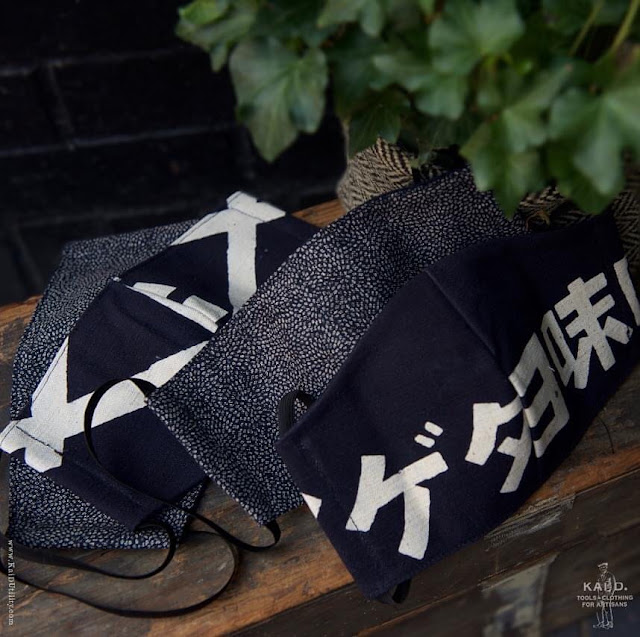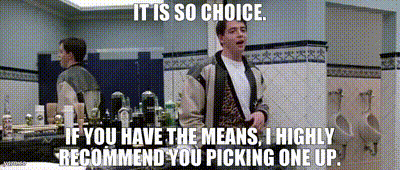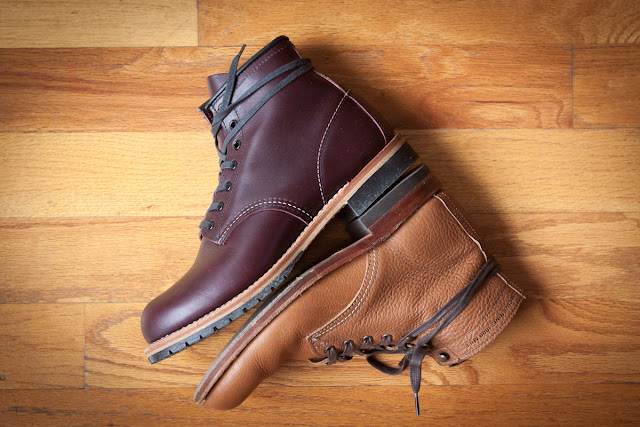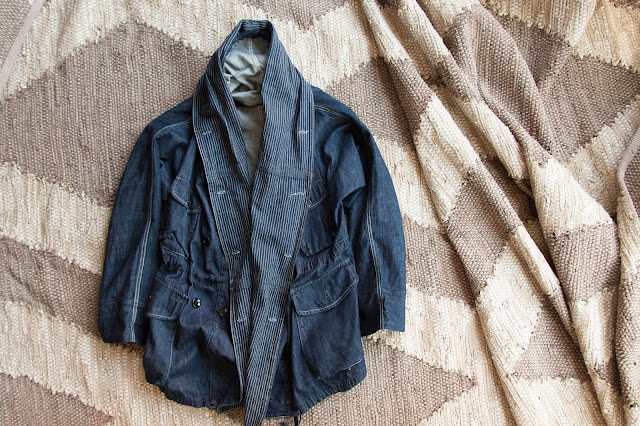Masks On - A Look at Masks in Menswear and Healthcare - DIY and Buying Options
 |
| Masks - Kai D. Utility |
Apologies for the radio silence. It's been a stressful past two months for everyone, to say the least. As a physician and a first time expectant father coming this May, I have to admit I've been otherwise preoccupied, feeling very unprepared and overwhelmed with a lot of things outside of menswear lately. I tried to sit down and write a few times, but talking about new clothes just felt awkward for me and a little tone deaf given recent events and the sudden shift in perspective on our lives. By now, you've likely seen many articles about supporting local business, how to stay busy at home, etc. so I don't want to belabor those issues. One aspect of the current healthcare situation that overlaps with menswear however, at least a little, is masks.
This topic is still under debate within the world of medicine and is therefore even more confusing for the everyday person. So I'm going to use this post to share a little bit about what I know think as a healthcare professional, menswear enthusiast and lover of dope jawnz.
 |
| Photo - Littlefatyaa |
First - Do masks work?
*Disclaimer*
- I do not represent my health care system in any way in an official
capacity. Any opinions expressed here are mine alone. I would also encourage
anyone reading this to verify all information for yourself - and that
extends to any news story, what your political party tells you to think, or any
information that may affect your life or the lives of your loved ones. It's admittedly a bit dry in this section, so feel free to jump to the next if you're so inclined.
"Wearing a mask won't stop you from getting Coronavirus." I've seen some form of this statement recently parroted in the news with a stunning amount of unearned confidence. Even if there is a kernel of truth to it, it's still misleading. These days, the pivot of that story is now "a mask won't keep you from getting sick, but it can help you stop spread the virus to others." That iteration may be a little more right than the previous one, but it's still not great. A more accurate version would be, "Wearing a mask should reduce your risk of infecting others and may reduce the risk of becoming sick yourself." When the initial outbreak began, many were justifiably worried that we were ill prepared to adequately supply healthcare workers. With that in mind, somehow the story became simultaneously that masks would not protect you if you buy one, but we also need to save them for healthcare workers who would be protected by those same masks.
It's not so simple, though, unfortunately. There are very good data about hand-washing reducing the rate of infection for illnesses similar to COVID-19, which is why you don't see any news stories titled "Is Washing Your Hands Useless?" However, there is less certainty about the degree of risk reduction that surgical masks and homemade cloth masks bestow. There's also a lot of variability in the types of masks outside of those engineered to meet N95 criteria, which make it harder to make sweeping statements about them. So we end up putting a lot of smaller studies together and pooling heterogeneous data so we have more confidence that the results of those studies are meaningful (higher numbers = generally stronger data, certain types of studies are more robust than others). Even then, results are mixed, and the data is on the weaker side that masks significantly reduce the rate of infection. Sometimes those studies showed a benefit with wearing surgical and cloth masks, sometimes not. You also might recall seeing stories about how countries that have implemented universal maskwear in the population also have generally lower rates of transmission, which seems to suggest that perhaps masks are helping drive that. But an association between two things does not necessarily mean that one thing is causing the other to happen (this is why prospective trials are better than retrospective studies). For example, those same countries also have a higher rate of rice consumption, but that doesn't mean eating rice reduces your risk of catching Coronavirus. We do have studies that show both cloth masks and surgical masks filter out particles of a certain size to different percentages, depending on materials/weave, distance, etc. Since the virus is primarily transmitted through droplets (larger particles) unless it is aerosolized (into smaller particles), masks should help decrease incoming or outcoming exposure.
So what does it all boil down to in the end? It means that we know most masks will filter out some degree of droplets, but we can't quantify the clinical difference in the real world with certainty. The overall impression is that they probably do more good than harm, even homemade cloth masks, based on imperfect data. A 70% reduction in droplets - hell, 50% - is a number most people would take compared with nothing. And when you're talking about a virus that is spread primarily through droplets, we connect the dots in the most logical fashion in the absence of strong evidence.
But enough medicalese. At this point, the CDC (but not WHO) is recommending people to wear a face covering when they leave the house, and this is probably a good idea.
 |
| Freka.kr |
But enough medicalese. At this point, the CDC (but not WHO) is recommending people to wear a face covering when they leave the house, and this is probably a good idea.
DIY Masks
 |
| A couple masks I made at home |
There's never been a better time to learn how to sew, and making a mask is a nice little project to get under your belt. The best part is it's not difficult or expensive to get your hands on a sewing machine. You can buy a new one, but if you like tank-like old things I'd suggest starting with your local Craigslist or Facebook Marketplace - I've obtained three that way, one of which was just given to me because no one seems to want old sewing machines. Recently, there’s been a huge surge of content available online providing instructions on making masks at home, both for healthcare workers who are running out of personal protective equipment and for personal use. There are tutorials for every level of expertise as well – ranging from quick no-sew conversions of things like bandanas and hair ties to more complicated piece multi-piece sewing construction. I’ve started experimenting with different patterns at home and found the pleated rectangle model to be pretty simple to bang out (though kind of boring to make). Note that virtually all of these masks are made with the purpose of blocking large droplets only, not with the intent or expectation of replacing an N-95 respirator (aside from outliers such as this video from a physician re-purposing healthcare sterilization material to make N95 equivalents - pretty cool and intelligently discussed).
As I mentioned above, it’s hard to know at this point which designs offer
the best protection and we’re unlikely to see any specific guidance on
this question either any time soon. In absence of that, the best ones are those that cover from around the bridge of the nose to below
the chin and fit snugly around the face. A metal adjuster on the bridge
of the nose really helps with the fit as well, from personal experience. For materials, tighter
weaves offer greater filtration than
looser ones and multiple layers are better, though you have to be able
to breathe through it all - when you exhale, it should take slightly more force than you're used to to breathe through the material, and it shouldn't whoosh all out around the sides. A recent New York Times article
interviewed a team at Missouri University of
Science and Technology who have been studying everyday materials to see
which offer the highest level of filtration efficacy.
They found masks composed of high quality, heavyweight “quilter’s cotton” to perform as well as surgical masks (in the 70-79% filtration rate range). Peter Tsai, who invented the electrostatic tech N95 masks use, also
suggested the use of nonwoven fabrics such as car shop towels as a
superior filter relative to most wovens. Fusible interfacing (a layer of
material added to give stiffness to a garment) is generally nonwoven also,
though variable in breathability
depending on the specific type. I have some lightweight fusible that is pretty useless in this regard, but serves well to stiffen up lighter fabrics.
 |
| Reference for above |
If you plan on making masks for healthcare
institutions, some institutions have their own accepted standards
and patterns, so I would start there. You can purchase spools of wire or
nose bridge pieces on eBay, Amazon, and Etsy (though shipping is slow AF right now - I'm waiting for some more to arrive), or repurpose
metal ties you have around the house (I've used those little bread ties, though I’ve found them to be a
bit flimsy). Here are just a few links to general tutorials on how to make a
mask at home (you can also search “DIY mask” or “homemade mask” on
Youtube):
*Second Disclaimer* - This should go without saying, but please don’t buy
N95s. If you’re not fit tested for them, you’re almost certainly not
getting much additional benefit while simultaneously taking them away
from the hands of healthcare providers. N95s provide protection during times when the virus is more likely to infect, which is usually during certain types of procedures.
Here in the west, masks still feel strange to wear, but in
Asian countries they're quite common. When worn outside of healthcare reasons, though, I've always associated the style
more so with streetwear and not necessarily classic or heritage
menswear. Generally, "fashion"
masks are usually made in either the pleated rectangle surgical
mask style or a shape that looks kinda like Shredder from TMNT (StyFo's Sarti Italiani model is a total Shredder mask, for instance).
N95s come in several shapes as well, though those shapes are rarely translated into commercial fashion masks, probably because they are quite fugly - often duck-like or comically conical.
 | ||||
| Hard pass |
 |
| Yes, please - Kai D. Utility |
The thing that really pushed me to write this post in the first place, however, was coming across the masks that Kai, from Kai D. Utility, has been making recently. My god. I've been noodling around with the idea of using vintage Japanese fabrics to sew up in a style of mask I like, but Kai D.'s simple versions are a total homerun - no more proof than being almost instantly sold out every time he's released them. On his IG account, he put out a statement recently noting that the demand has been so high it's been stressing him out and affecting his general well-being, so he's scaling back for now to take care of himself and his business for a while. Still, there should be a few posted daily around 11 AM for now, which sell for $30 + $9.99 shipping (increased from $20, initially). You can find them in the "supplies" section of the Kai D. website here, and stock should be more attainable when he can source more supplies from abroad.
The specific pattern is quite common actually, but because of their simplicity and the rugged, vintage nature of the fabrics, Kai D.'s masks bridge the gap between streetwear and more conventional menswear nicely, I think. My favorites are the heavy indigo printed graphic cotton ones that appear to be pieced from vintage Japanese maekake/aprons (here are some vintage maekake on Etsy if you're interested in making your own).
 | |
| American Trench |
A lot of clothing manufacturers have temporarily shifted production to making personal protective equipment for healthcare workers, but you can also buy consumer masks at other retailers such as Standard Issue, American Trench, Monsivais & Co, Citizens of Humanity, Brave Star Selvage (thanks Aliotsy), Ciano Farmer (Cone Mills selvedge, wow), and Good Fight. GQ recently ran a story on where to buy masks as well. Otherwise, I find Etsy to be a good ecosystem for homemade mask options as its community is already natively made up of a lot of small home crafters.
If I'm missing any good shops you know of or models you like, please let me know. As hard as this situation is, it's been incredibly rewarding and inspiring to see how much people are coming together to help each other out. Thank you to everyone staying at home, and thank you From Squalor To Baller for making me impulse-buy this Rowenta iron a couple months ago, which makes working on projects much more enjoyable - it just puffs out steam in such a satisfying way.































Thanks, Patrick, for the kind words. Really glad you enjoyed it.
ReplyDelete